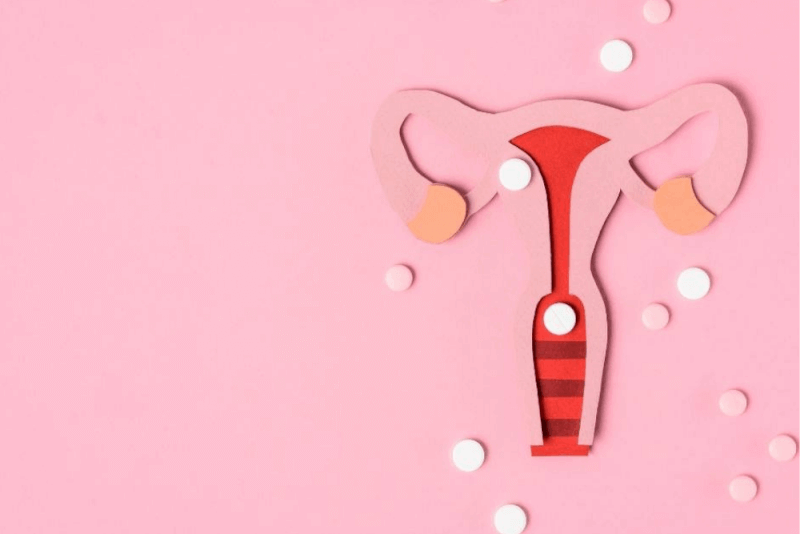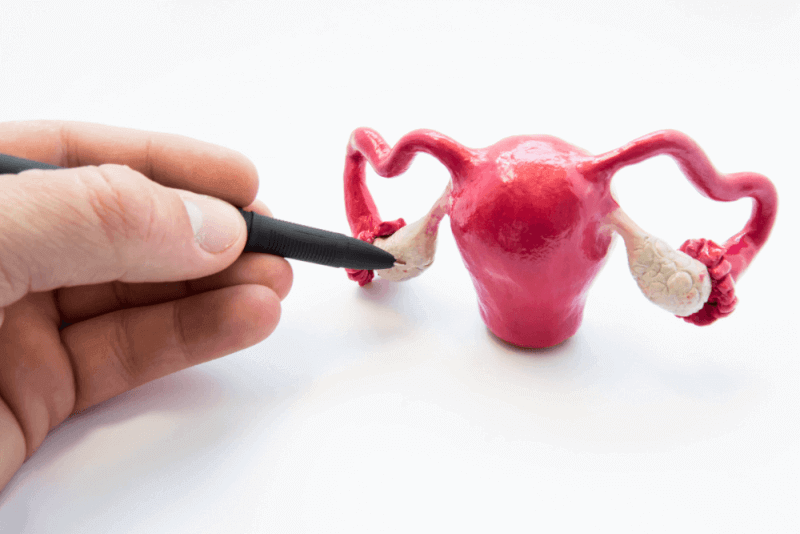What is a Bartholin's Cyst?
A Bartholin's cyst is the inflammation of one of the two Bartholin glands. The Bartholin gland is a pea-sized gland located near the entrance of the vagina. It is usually caused by a bacterial infection or a Bartholin cyst, but diseases can also cause such a cyst. Other risk factors include poor hygiene and sexually transmitted diseases such as gonorrhea or chlamydia.
Bartholin's cyst can affect adult women of all ages but is most common in young and sexually active women. Typical symptoms include swelling, redness, and pain. Many patients also complain of problems sitting and walking. The disease is treatable and usually has no long-term effects for those affected. Surgery is rarely necessary.
Bartholin's Cyst During Pregnancy
The presence of a Bartholin's cyst during pregnancy does not pose any danger to fetal development or maternal health. However, if an infection occurs, medical intervention is necessary because infections developing anywhere in the body of a pregnant woman can harm the baby.
Causes of Bartholin's Cyst
The exact reasons why Bartholin's cysts occur and why some women are more susceptible are not yet known, but certain factors are considered valid. The causes of Bartholin's cyst include:
- Injury, irritation, or excessive skin growth in the vulva area
- Chlamydia
- Gonorrhea
- Other sexually transmitted infections
- E. coli bacteria
- Streptococci
- Staphylococci
- Staphylococcus aureus
- Fluid accumulation
Some pathogens enter the vulva and reach the drainage channels of the Bartholin glands, causing infection. Some of these pathogens are naturally present in the body, while others, such as those transmitted sexually, enter through contact.
Symptoms of Bartholin's Cyst
Bartholin's cysts usually do not cause any symptoms other than minor irritation. However, if an infection occurs, the following symptoms may be observed:
- Discomfort while walking, during sexual intercourse, using tampons, or cleaning after using the toilet
- Pain in the Bartholin area
- Fever
- Chills
- Drainage from the cyst
- Growth of the cyst
- Redness and warmth of the area
- Loss of appetite
- Body ache
- Fatigue
Diagnosis Criteria for Bartholin's Cyst
If there is a nearly painless, swollen, and spherical lump in the groin area, you should see a gynecologist within the next few days to determine if it is a Bartholin's cyst. However, if there is severe pain and redness on the inner lips, you should see a doctor the same day or at the latest the next day. Initially, the doctor will ask detailed questions about your symptoms and then examine the swelling.
This is usually sufficient to make a definitive diagnosis. If there is a suspicion of inflammation caused by chlamydia or gonococci, the doctor will also take a swab from the vagina and urethra and have it analyzed in a laboratory. When pathogens are found, antibiotic treatment can begin.
Treatment Methods for Bartholin's Cyst
Depending on the stage of the disease, conservative treatment methods may or may not be successful. Therefore, especially in the early stages, it is important to take anti-inflammatory and pain-relieving medications and cool the affected area. Treatment should be started quickly to prevent possible infection in your partner.
Local treatments such as ointments or vaginal creams can be applied, and vaginal tablets, pads, or compresses can be used. Sitz baths and homeopathic medicines also provide relief. In some cases, red light therapy has proven effective, significantly reducing the likelihood of inflammation in healthy tissue.
Medication for Bartholin's Cyst
Pain relievers are commonly used for a Bartholin's cyst. Ibuprofen or paracetamol can be used to help alleviate pain. If an infection is present in the cyst, then antibiotic treatment is necessary, especially in sexually transmitted diseases.
Bartholin's Cyst Surgery
There are three different surgical methods that can be used to remove a Bartholin's cyst. Surgical methods are generally applied when other treatment options have not responded or when the expected improvement has not occurred.
How is Bartholin's Cyst Surgery Performed?
If home remedies and conservative treatment methods do not improve the condition, the only remaining option is to surgically open the abscess. Many women are initially hesitant about this step, but opening the abscess usually brings significant relief. The operation itself is typically performed under local anesthesia on an outpatient basis and only takes a few minutes. In rare cases, general anesthesia may also be used, especially when local anesthetic does not work well in inflamed tissue.
Today, the most commonly used surgical technique for Bartholin's is called marsupialization. The surgeon opens the abscess with a scalpel and stitches the walls of the abscess cavity to the skin. This keeps the cavity open and allows secretion to flow out without obstruction. Drainage also prevents the edges of the wound from sticking together. This is necessary to prevent recurrence of the abscess. Additionally, the pathogen causing the disease can be identified from the secretion, and appropriate antibiotic treatment can begin. The stitches are usually removed after a few days, and the wound itself fully heals within four to six weeks. Sitz baths several times a day can help with healing. If the disease continues to recur, other interventions may be considered.
Summary of the Surgery
Duration of Surgery: 30 Minutes - 1 Hour
Type of Anesthesia: General, Local
Hospital Stay: 1 Day
Return to Work: 1-2 Weeks
Methods of Bartholin's Cyst Surgery
The first method applied in Bartholin's cyst is surgical drainage. This method is used when the cyst is infected and also when there is pain or discomfort. The drainage method applied varies depending on the size of the cyst.
Another method is marsupialization. In this method, surgeons open and drain the cyst. Afterwards, the edges of the cyst walls are stitched to ensure continuous drainage. This method is especially preferred in cases of recurrent Bartholin's cysts.
The last surgical method applied is used in cases where treatment has not been effective and is rarely used. In this case, surgical procedures aimed at removing the Bartholin gland are implemented.
Benefits of Bartholin's Cyst Surgery
If surgical options are chosen for the treatment of a Bartholin's cyst, it is possible to resolve situations where other treatment methods have not responded. Besides, the application of marsupialization in continuously recurring cases eliminates the likelihood of recurrence.
Complications of Bartholin's Cyst Surgery
The procedures applied for a Bartholin's cyst are extremely safe. Complications are rarely seen. Complications that may occur after procedures include:
- Allergic reactions to anesthesia
- Bleeding
- Infection
- Scarring
Sitz Baths
You can sit in a bathtub for a sitz bath or use special sitz bath attachments for the toilet. Mix water and disinfectant additives correctly. Then, stay in the warm bath for about 15 to 30 minutes. Chamomile, in particular, has proven to be an effective additive due to its deep penetration into skin layers and its anti-inflammatory effects while also stimulating wound healing.
Alternatively, you can use potassium permanganate, which disinfects and dries out inflammation. However, since potassium permanganate can also cause chemical burns and dry out the skin, care must be taken to use the correct mixture ratio. Another possibility for an additive is povidone iodine, which has disinfecting effects. However, additives derived from herbal medicines such as oak bark, chamomile flowers, and hazel leaves can also alleviate inflammation.
Homeopathy
In homeopathy, typical active substances for acute Bartholin's include Hepar Sulphur C15 and Pyrogenicum C9. For chronic forms, Conium 15 and Staphysagria C15 can be used. You should take five globules twice a day for five months. If the infection recurs, the treatment consists of five granules per day for a period of two months. The choice of medicine is determined based on symptoms: Belladonna is recommended for increasing pain and red, hot abscesses. Apis is more likely to be used when there is severe pain upon touching and the abscess is bright.
Ointment
You should consult a gynecologist to choose the right ointment. In any case, the ointment should have an anti-inflammatory and/or antibiotic effect. Active ingredients that contain fusidic acid, nebacetin, or bacitracin are particularly suitable. An ichthammol ointment can help accelerate the maturation of an already formed abscess, facilitating quicker surgical treatment.
If Bartholin's cyst cannot be eradicated with conservative methods or if symptoms worsen, you should consult a doctor. The doctor will then decide whether or not to use antibiotics. Antibiotic treatment depends on the causative bacteria and aims to facilitate healing of the cyst and prevent the spread of infection. Antibiotics can be prescribed in tablet or ointment form. However, if this treatment also fails, there is usually no alternative to surgical intervention.
Postoperative Process of Bartholin's Cyst Surgery
After Bartholin's surgeries, patients generally return to normal life shortly. After the surgery, it is important to keep the area clean and dry according to the doctor's advice. It is important to wait for the scar tissue to heal and to consult the doctor before having sexual intercourse.
Risks of Bartholin's Cyst
Bartholin's cyst is more common in certain groups. These risk groups include:
- Being between the ages of 20-30
- Being sexually active
- Having recent trauma or injury to the vulva
- Having a sexually transmitted infection
Bursting of Bartholin's Cyst
There is no problem if a Bartholin's cyst bursts on its own. If this occurs, the area must be kept clean and dry to prevent the spread of infection. However, trying to drain the cyst yourself is incorrect behavior. In this case, the risk of developing an infection is very high.
Considerations for Individuals with Bartholin's Cyst
Individuals with a Bartholin's cyst should take several warm water baths during the day, which will facilitate the easy drainage of the cyst. Attention should also be paid to keeping the area clean and dry.
Healing Process of Bartholin's Cyst
A Bartholin's cyst can usually be resolved easily with warm water baths, making the healing process very easy and quick. In cases of severe infection or when the cyst is very large, the healing process can take longer.
Warm baths are also recommended after surgery. This helps clean the area while also aiding in alleviating discomfort.










